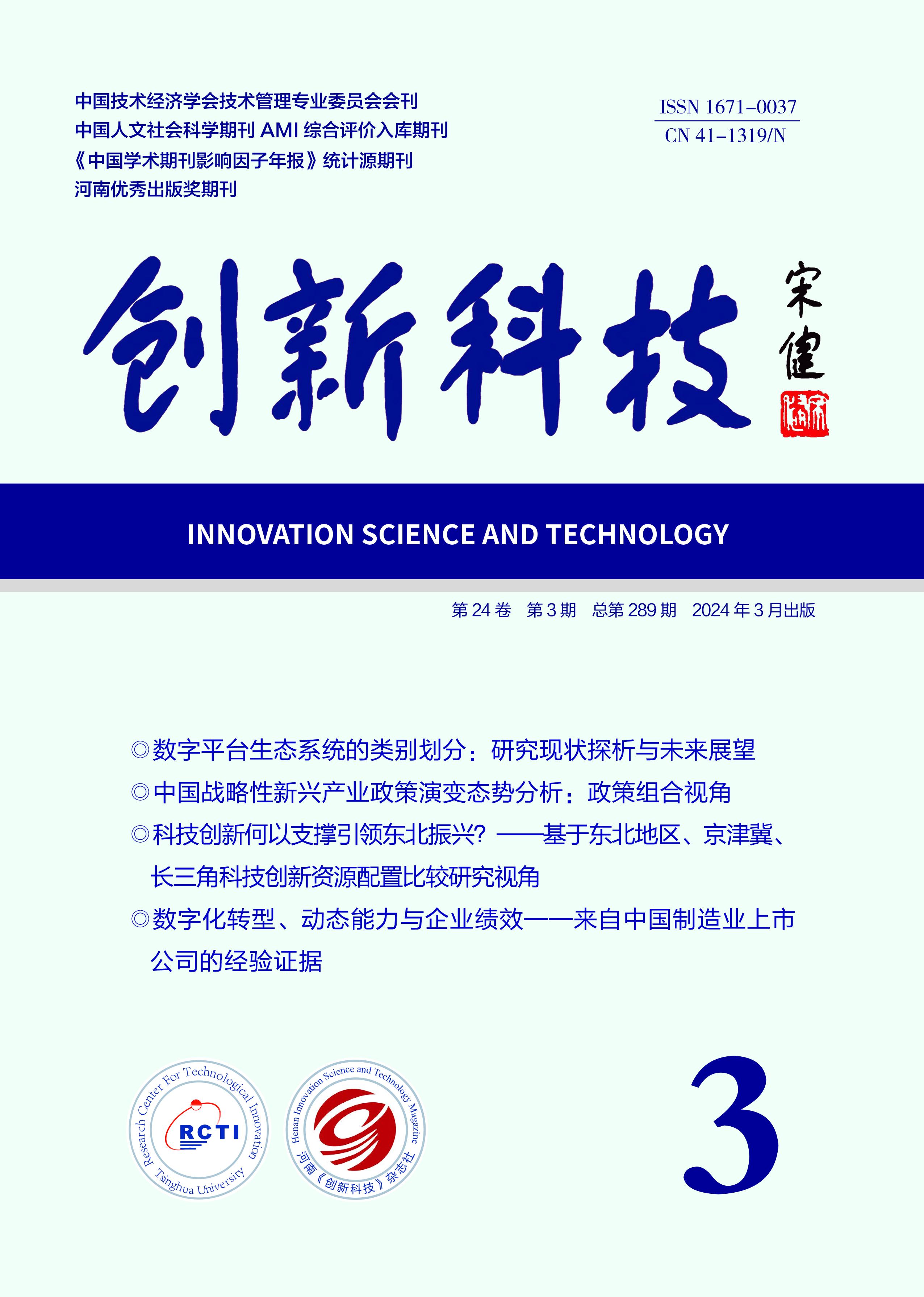INNOVATION SCIENCE AND TECHNOLOGY
Quick Search

All publication are peer-review
Peer review will take the from of double-blind review Judge objectively and impartially
There is no conflict of interest for the reviewer
Review articles shall be kept strictly confidential prior to publication
Industrial Technology Progress
How does Green Finance Affect the Development of New Industri⁃ alization?
Zhang Huaxin, Fu Zhanjing
(School of Economics, Liaoning University, Shenyang 110000, China)
Abstract: Currently, trial system globally China has established itself as the country with the most robust indus⁃ . However, its industrial development still encounters challenges such as the underdeveloped foundation of high-tech industries and environmentally unfriendly production methods. The advancement of new industrial development is crucial for promoting the construc⁃ tion of a modern industrial system, as it can effectively leverage digital technology to facilitate in⁃ dustrial upgrading and low-carbon development. Additionally, financial support plays a pivotal role in industrial development, particularly in green financial development which directly im⁃ pacts the progress of China's new industry. Based on the aforementioned considerations, this study meticulously selected a panel dataset encompassing 30 provinces in China, extending from 2011 to 2022. Employing the spatial Durbin model and the panel threshold model, we conducted an empirical investigation into the influence of green finance on the advancement of new indus⁃ tries. Initially, we created a technical distance matrix and a technical geography nested matrix to analyze the evolution of China's new industries from both overall and regional perspectives. Sub⁃ sequently, these matrices were employed to elucidate the impact of green finance on the develop⁃ ment of new industries. The empirical findings corroborate that green finance significantly fos⁃ ters the development of new industries in China and has a positive spillover effect. To delve into the nonlinear association between green finance and the emergence of new industries, we ad⁃ opted the spatial Durbin model and the panel threshold model for further analysis. Our results in⁃ dicate that the bolstering effects of green finance on new industrial establishments initially in⁃ crease and then diminish. Through robustness tests, we confirmed the reliability of our conclu⁃ sions. Then, from the vantage point of green technology innovation and industrial restructuring, this paper delved into the functional mechanism through which green finance affects the ad⁃ vancement of new industries. The empirical examination reveals that green finance can enhance the development of new industries by fostering green technological innovation and facilitating in⁃ dustrial restructuring. Furthermore, the study meticulously categorized green technological inno⁃ vations into innovative and practical advancements, and industrial restructuring into rationaliza⁃ tion and sophistication. It evaluated the influence of these distinct categories on the interplay be⁃ tween green finance and burgeoning industry growth. The findings indicate that the causal ef⁃ fects of innovative and practical green technologies, alongside advanced industrial metamorpho⁃ sis, are pronounced, whereas the impact of industrial rationalization on this relationship is negli⁃ gible. Finally, the research conducted a heterogeneity analysis from the vantage points of green fi⁃ nancial reform pilot zones, the level of new industrial development, and free trade pilot areas. The findings suggest that green finance exerts a significant impetus on the development of new indus⁃ tries in regions outside reform pilot zones, across primary and secondary industrial tiers, and within free trade pilot zones. In sum, the investigation contributes substantially to theoretical dis⁃ course and informs policy-making in the domain of green finance and new industrial development.
Key words: green finance; development of new industrialization; Spatial Dubin model; green technology innovation; industrial restructuring